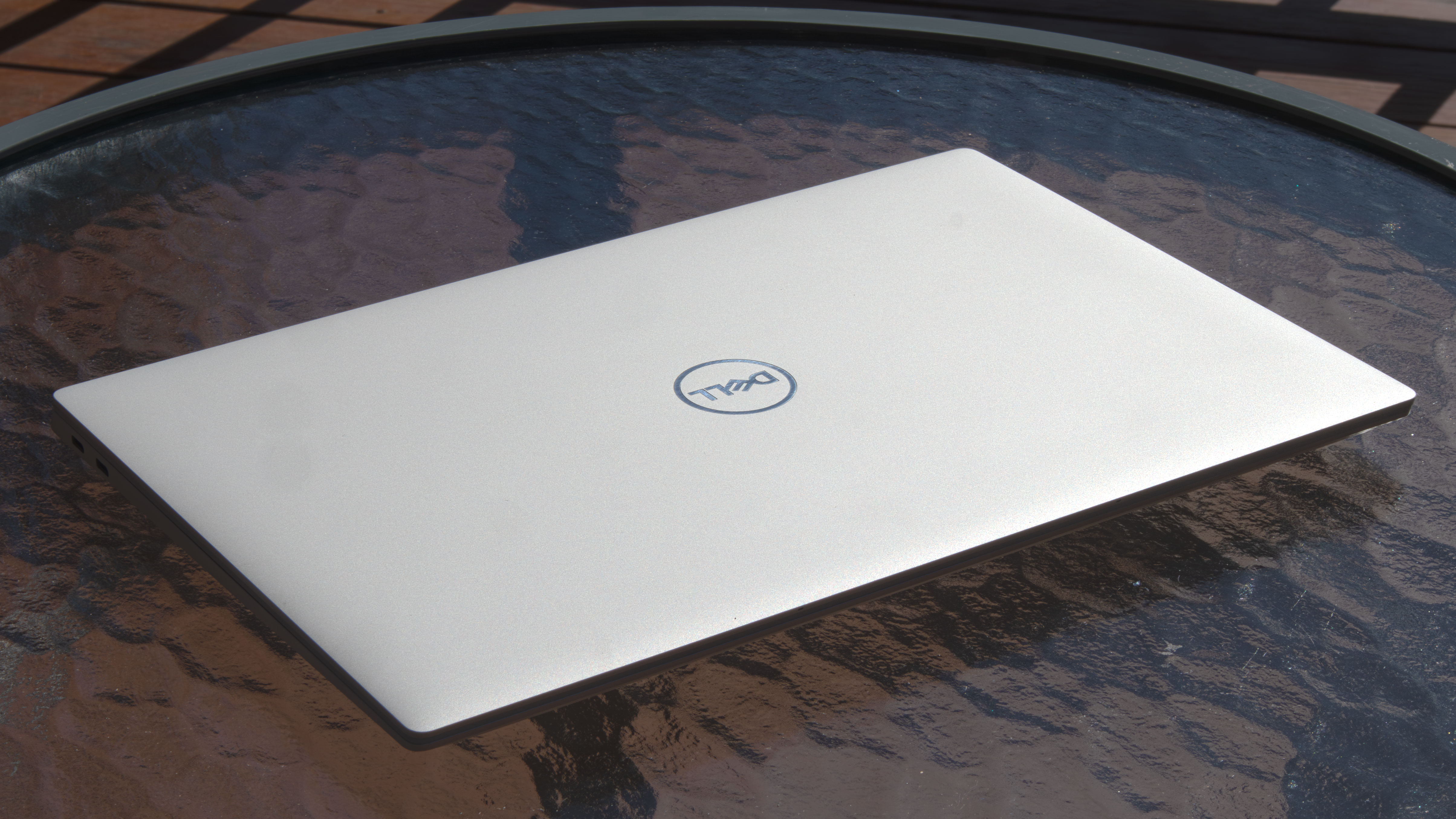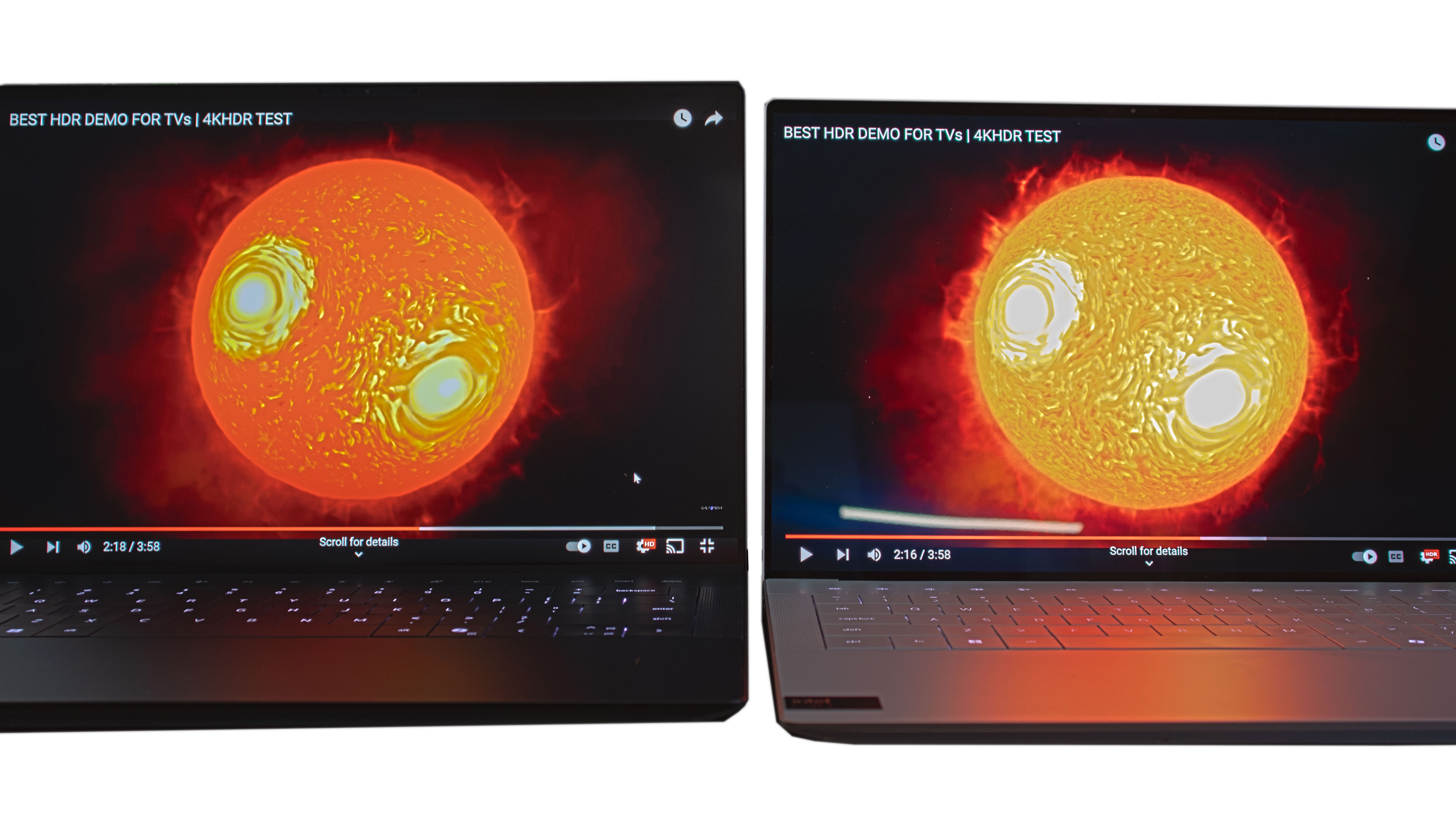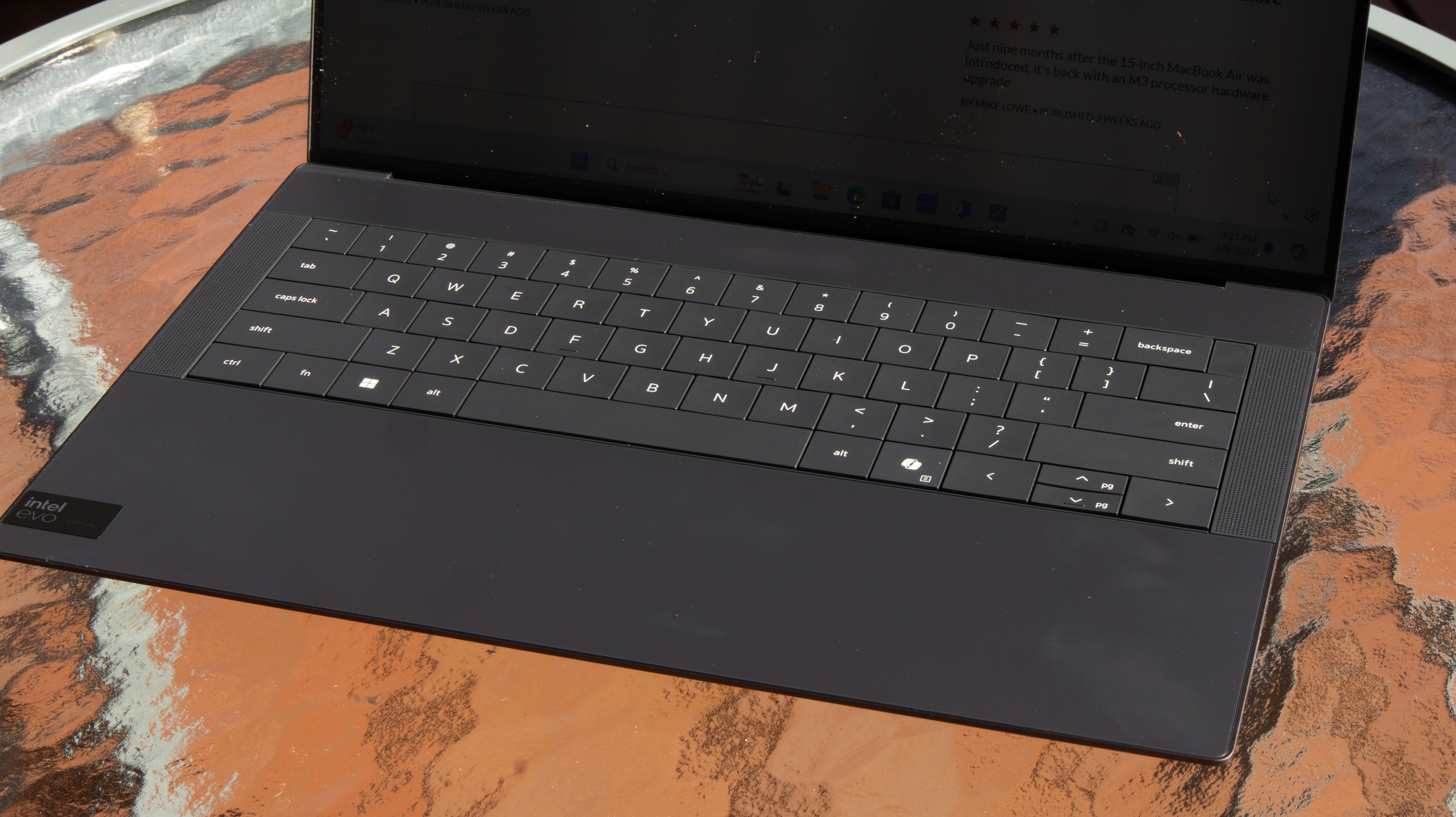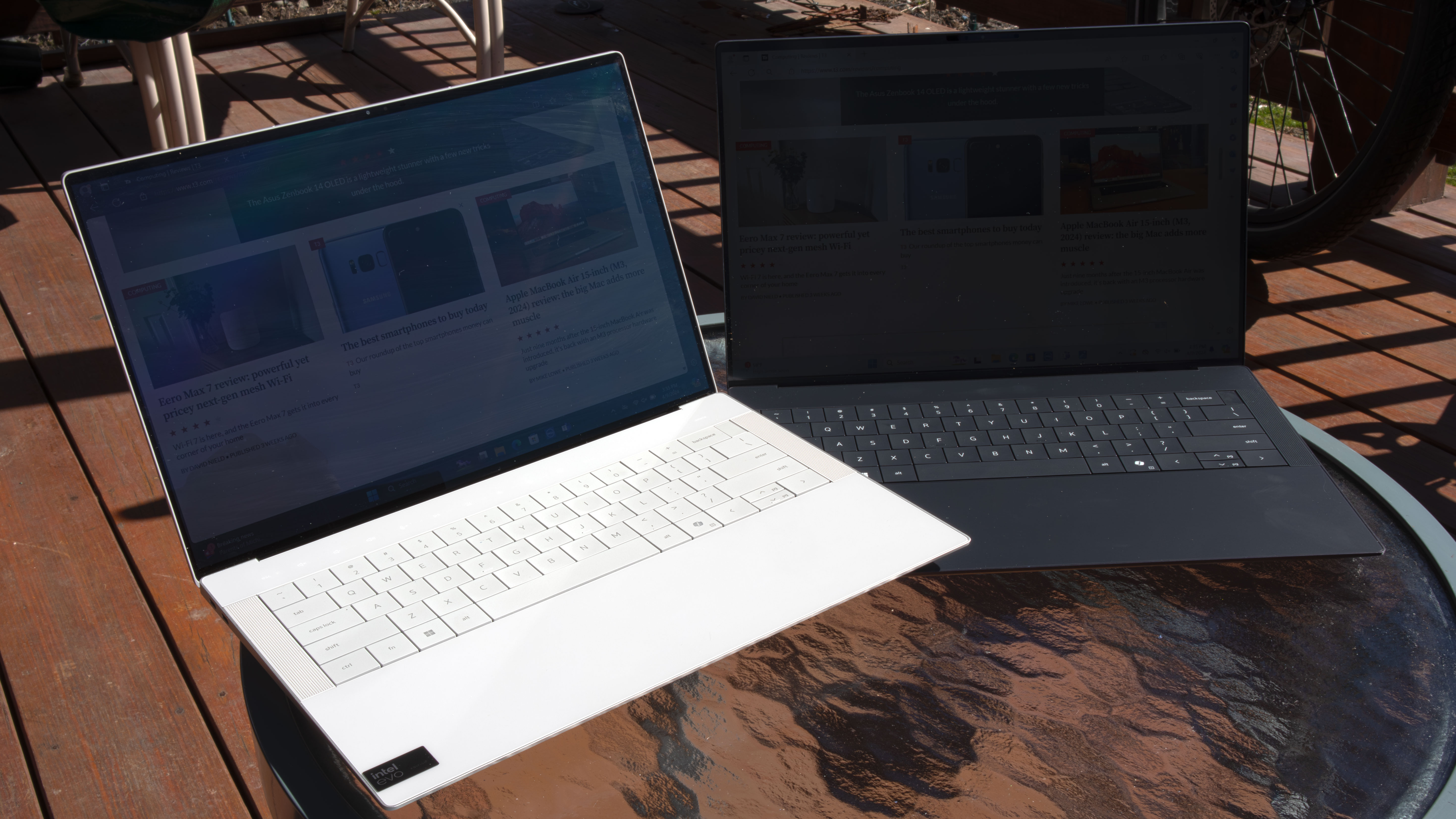Dell XPS 14 (9440) review: the middle ground
Dell's 14-inch offering sits in between the XPS 13's greater portability and XPS 16's greater power. So is it a winner?


The 2024 model of the XPS 14 (codename 9440) tries to be the porridge in the middle: more powerful than the XPS 13, but smaller than the XPS 16. It works, especially with the gorgeous OLED screen option. But the screen is let down somewhat by a single lacklustre GPU option. It’s a compromise, and most users may be better off making a choice between small or powerful.
-
+
Excellent battery life
-
+
Strong performance for most tasks
-
-
Somewhat heavier and bulkier than the XPS 13
-
-
Gaming performance isn’t enough to drive the 3.2K OLED screen
Why you can trust T3

Remember the tale of Goldilocks and the Three Bears? 'Too cold', 'too hot', and 'just right' in the middle? That’s what the new Dell XPS 14 (9440) aims for, landing between the ultra-svelte and portable Dell XPS 13 and the powerful but heavy Dell XPS 16.
It achieves a good balance, offering excellent battery life and plenty of power for everyday use, in a bid to be one of the best laptops money can buy. However, the only GPU option (an Nvidia GeForce RTX 4050) isn’t powerful enough to drive the 3.2K OLED screen for high-res gaming.
Clearly, then, the Dell XPS 14 is aimed at those who want a balance. It's a compelling package, but does this 'just right' approach tick all the right boxes and is it the best Dell XPS laptop for most people?
Dell XPS 14 (2024): Price & Availability
The Dell XPS 14 is available now, starting at £1,439/$1,499/AU$3,698.20. That’s for the base model, with integrated graphics, a Full HD screen, 16GB of RAM, a 512GB SSD, and the Intel Core 7 Ultra 155H processor.
The top-of-the-line model (with Nvidia GeForce RTX 4050 GPU, 64GB of RAM and 4TB storage) will cost you much more: around £2,698.80/$3,399/AU$3,998.50.
I tested two models: one with the standard FHD screen and one with the 3.2K OLED option, in order to compare the pros and cons of each.
Dell XPS 14 review: Design

The XPS 14 is a sleek, stylish laptop with an attractive machined aluminium case. It’s available in two finishes: an off-white called Platinum and a dark, almost deep purple finish called Graphite. I looked at models in both finishes, and I think the Graphite looks more attractive.
Get all the latest news, reviews, deals and buying guides on gorgeous tech, home and active products from the T3 experts
Open the lid of the XPS 14, and the absence of a visible touchpad and function keys is the first thing you notice. Both of these are hidden beneath the smooth, slightly matte Corning Gorilla glass top that surrounds the keyboard. The function keys are backlit, but the touchpad isn't marked or illuminated. It’s an attractive, if a little stark, practical, clean-looking design.
The glass top and the keyboard match the outside finish: another reason I prefer the Graphite. Both finishes do show fingerprint marks, which are more visible on the darker Graphite though.
The connections are on the edges of the case: two Thunderbolt 4 ports on the left side, a headphone socket, one Thunderbolt 4 port, and a microSD card slot on the right. That means no built-in HDMI output, but an included dongle plugs into one of the Thunderbolt ports and adds a USB-A port and an HDMI 2.0 output.
These Thunderbolt ports also charge the XPS 14, which comes with a USB power supply (60-watt for integrated graphics, 100-watt for Nvidia GPU models). These ports can also charge other low-power devices: each can send up to 15W of juice to charge a phone or tablet.
The whole package weighs about 1.7kg/3.8lb, making it significantly heavier than the XPS 13, which weighs about 1.2kg/2.6lb. That’s enough of a difference to be very noticeable, especially if you're carrying it around all day. The size difference isn’t much, but the XPS 14 is chunkier and denser.
Dell XPS 14 review: Display

Two display options are available for the XPS 14: a Full HD (1920 x 1200 pixel) LCD panel, or a gorgeous 3.2K (3200 x 2000 pixel) 120Hz OLED panel.
The OLED option adds a few hundred to the price, but I think it's worth it. Although it has slightly lower maximum brightness, it has much better colour, contrast, resolution, and overall good-lookingness.
Movies and games look great, with bright colors right next to gloomy shadows that still maintain details, especially with games that support High Dynamic Range (HDR). Games like Doom Eternal really pop with this display, with the blood spatters standing out vividly against the dark, gloomy atmosphere of the game.
The FHD display isn’t bad, though: it provides strong colour and a slightly higher brightness (at 500 nits) than the OLED, which could make it a better option if you need to use it outside.
Dell XPS 14 review: Keyboard & Touchpad

The XPS 14's keyboard is excellent, with large, slightly concave keys that make typing comfortable. The keys have a decent amount of travel but do not have the clicky feel of a mechanical keyboard. The cursor keys feel cramped, though, with the up and down keys squished into the same space as a single key. The CoPilot key, which triggers Microsoft’s new AI assistant, is on the right of the space bar. Grilles cover the small but quite powerful speakers on each side of the keyboard.
The hidden touchpad is quite large – the active area measures 7.62cm (3in) by 14cm (5.5in). After using it for a while, I quickly learned where it was without needing the touch cue of a raised ridge or edge. When you tap it, it produces a reassuring click that feels like a physical click, but it is purely artificial: the glass panel doesn’t move. Instead, the XPS 14 creates the click with a motor, known as haptic feedback.
While I quickly became comfortable with the touchpad, the touch function buttons didn’t work for me. There is no simulated click, and the function key backlights are hard to see in direct sunlight. It contributes to the smart and clean design, but as a frequent user of function keys, I would have preferred a row of physical keys. When you press the Function key, the buttons do double duty as controls for volume, screen brightness, and so forth, with the labels changing to indicate the different functions.
Dell XPS 14 review: Performance

The XPS 14 has enough work speed but lacks the performance to excel at gaming. The 16-core processor has no problems powering through tasks in programmes like Excel and Photoshop, crunching complex formulas, and handling large photos with only a slight whooshing of the fan. The benchmarking program PC Mark 10 scored 6082, which is average for a mid-range laptop. That’s somewhat less than the 7630 the XPS 17 scored, which had a faster processor and GPU.
Gaming was more of a stretch, thorough. The Nvidia GeForce RTX 4050 GPU is the only GPU option available and is at the low-end of Nvidia’s laptop GPU lineup. In Doom Eternal, running on the Good graphics preset, it managed about 60 frames per second at the native 3200 x 2000 pixel resolution. At the lower resolution of 1920 x 1200 pixels, it managed 120fps. However, there was not enough graphics memory to run Doom Eternal on a higher graphics quality setting.
The more graphically intense racing game F1 22 had a similar pattern: in the high graphics preset at the 3200 x 2000 pixel resolution, it managed about 43fps. At the 1920 x 1200 pixel resolution, that was increased to 78fps, which is a much smoother gaming experience. It’s just a pity that there isn’t enough graphics power here to really take advantage of the gorgeous screen.
Dell XPS 14 review: Battery life

The battery life of the XPS 14 is excellent. It typically lasted well over eight hours during my testing, which is plenty for a day’s work or a long flight.
How much longer depends on one thing: which screen option you choose. I tested both options and found that the OLED screen shortened the battery life, but it was still great.
Watching a movie on the standard option, the battery lasted 11 hours and 46 minutes. Watching the same film on the OLED screen, the battery life fell to 8 hours and 32 minutes. To be fair, both tests were worst-case scenarios with the screen set to maximum brightness.
If you need to stretch it, get the standard option and knock the brightness down: set to a moderate level (200 nits), the battery lasted through a remarkable 19 hours and 13 minutes of movie watching. That's more than enough for the entire Lord of the Rings Trilogy (Extended Edition). Just skip the Hobbit moves and the Amazon series, because both are terrible.
The other features of the XPS 14 are pretty typical: you get Bluetooth and Wi-Fi 6E wireless (although not the Wi-Fi 7 present on the XPS 13 and 16 models). The top right blank key on the keyboard doubles as a power button and fingerprint reader, and the 1080p webcam above the screen can also be used to log in with Windows Hello.
Dell XPS 14 review: Verdict

The Dell XPS 14 looks like a killer combination on paper: great battery life, a gorgeous OLED screen, and decent computing power.
But, in real-world use, it feels like an inadequate compromise, ending up bigger and heavier than the XPS 13 and less powerful than the XPS 16.
That’s most evident in gaming: while the XPS 16 had the gaming grunt to handle games at the full resolution of the screen in high frame rates, the XPS 14 doesn’t. To play modern games on the beautiful 3.2K resolution OLED screen, you have to knock the game resolution down to Full HD, or put up with pokey frame rates.
The Dell XPS 14 is for those who really can't be content with a screen size that's any smaller. But as the middle ground between Dell XPS 13 and Dell XPS 16 it doesn't feel quite as accomplished in portability or power goals. It's still a great laptop in many areas though.
Also consider
The two apparent competitors here are the 2024 models of the Dell XPS 13 and the XPS 16. It depends if you want smaller and more portable, or larger and more powerful.
The other obvious competitor is the new 15-inch M3 Apple MacBook Air, which does not need fans to cool the system. That makes it much quieter and thinner.

Richard Baguley has been writing about technology since the 1990s, when he left a promising career in high finance to work on Amiga Format magazine for Future. It has been downhill for him ever since, writing for publications such as PC World, Wired and Reviewed.com. He has tested gadgets as diverse as 3D printers to washing machines. For T3, he covers laptops, smartphones, and many other topics. He lives near Boston in the USA with his wife, one dog, and an indeterminate number of cats.